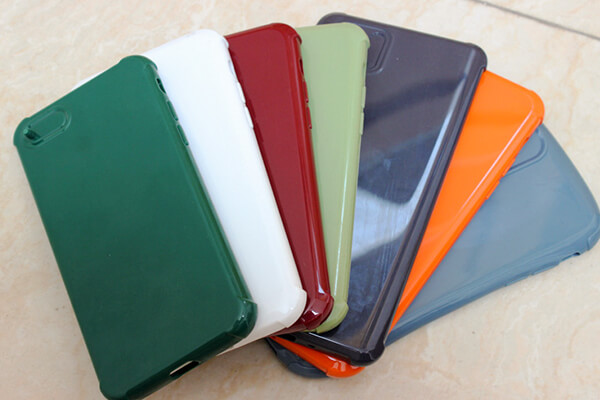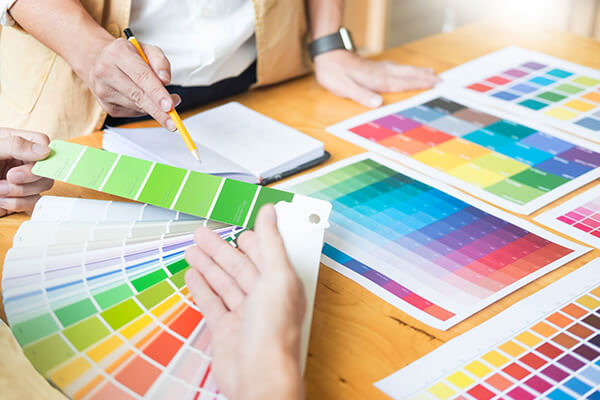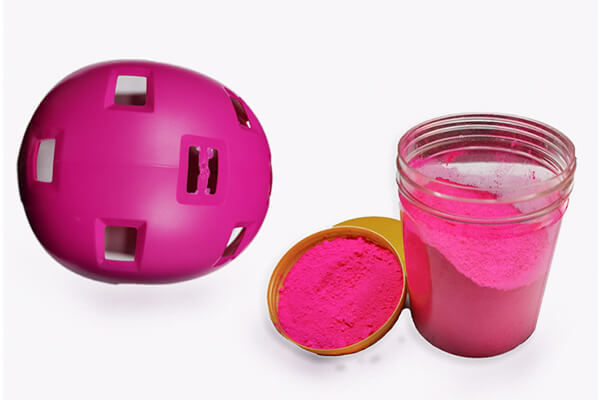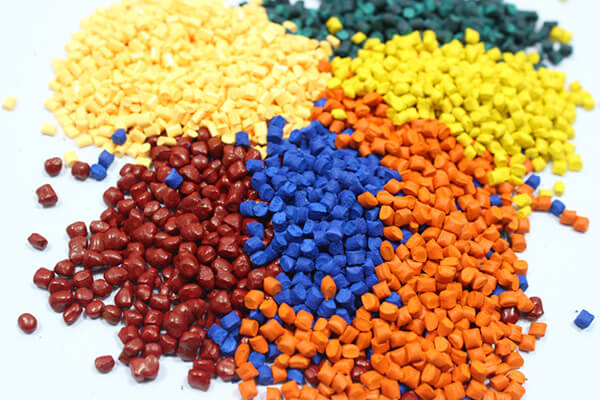How to Custom Plastic Color in Injection Molding?
Custom plastic color is to match the color that the customer wants, promote the consumer’s love for the product, and the plastic product does not change color during processing and use. In plastic products, the proportion that needs to be colored accounts for about 80%. The richness of color is an important advantage of plastic products. Plastic product manufacturers must meet the customer’s requirements for color, and ensure that the color of the product is basically the same as the sample provided by the customer.
It is theoretically feasible to produce enough colorants to obtain various colors required, but it brings many difficulties to production, technology and management. Therefore, only a few basic color colorants are generally used in the industry to meet the color requirements through color matching.
Understanding International Color Standards – Pantone
Pantone color card (PANTONE) color card is an international standard color card. PANTONE color card is a world-renowned color authority, a color communication system covering printing, textile, plastic, drawing, digital technology and other fields, and has become an international unified standard language for exchanging color information today.
PANTONE PLASTICS Color System TM (PANTONE PLASTICS Color System TM ) allows designers, manufacturers and suppliers of plastic products to select, define, control and produce hundreds of colors in the system through opaque and transparent plastic color chips.
3 Plastic Color Matching Processes in Injection Molding
In the production of plastic products by injection molding, there are mainly three kinds of plastic color matching methods. They are: the method of directly adding the toner to the resin raw material, the method of mixing the resin with the toner and the extrusion method and the masterbatch method.
Toner mixed with plastic raw materials
The method of directly adding toner to resin is the most commonly used method for plastic color matching. After the toner and plastic resin raw materials are evenly mixed, they are sent to the next step of the product injection molding process.
The advantages are: short process and low cost. The plastic raw material only needs to be melted once, and the molded product retains the properties of the plastic raw material to the greatest extent. But there are also disadvantages, poor tinting strength, slightly poor color uniformity and color quality stability.
Toner mixed with raw materials and extruded
The toner mixed resin extrusion method is to mix and melt toner and raw materials, and then through a simple die extrusion molding process, a long strip of colored plastic thin rods is formed, and then cut to serve as a colored material for injection molding. The reconstituted plastic material goes to the next injection molding process.
This method has the best effect on the uniformity of the resin and the color, which can make the pigment fully dispersed in the resin, the color is accurate, the quality is clean, and the processing is easy.
However, there are also disadvantages. The plastic raw material is finally made into a plastic product after two times of melting, which reduces the performance of the raw material plastic to a certain extent. This process is suitable for products with particularly high requirements for product color uniformity.
masterbatch
Color masterbatch is a colorant granule with a certain concentration of colorant, carrier resin, dispersant, and other additives. According to the color requirements of plastic products, a certain amount of color masterbatch is added to make the products meet certain coloring requirements.
This masterbatch method is usually used in the coloring of black plastic products. Low cost and simple process. However, for colored plastic products, the masterbatch method is generally not recommended, because it is difficult to control the influence of the amount of colorant used on the color of the final product.
4 steps to custom plastic color
There are roughly 4 steps in the color matching process of plastic products: understand the color matching requirements, initially design the color formula, debug color samples, and finally confirm the color.
Understand the requirements of plastic products (samples)
- Learn about the plastic types and properties of your samples.
- Understand the usage scenarios and uses of sample products.
- Analyze the molding process of plastic products.
According to the above three conditions, we can understand the requirements (heat resistance, light resistance, weather resistance, migration resistance, safety) that the colorant selected for the product needs to meet. In addition, the color matching personnel also need to confirm the dosage form of the colorant required by the customer (toner, color masterbatch, modifier), and confirm the coloring ratio (addition amount) required by the customer.
Preliminary formula design according to requirements
- Ask the customer about the use of the product and whether there are special requirements. Plastic products for outdoor use must consider the weather resistance of pigments.
- Observe the samples provided by the customer, determine the color combination, and choose which hue to mix.
- Colorants are selected based on whether the sample is transparent, opaque, or translucent.
- Comprehensive consideration of coloring costs. Cost is also a very important consideration, and the price of the pigment is just as important as the performance of the pigment.
A preliminary formula was drawn up. After repeated research, the differences from the standard color sample and the reference were repeatedly compared in terms of hue, brightness, shade, etc., and on this basis, the colorant formula of the reference object was revised, and a preliminary formula was drawn up.
Repeatedly adjust the sample as close to the sample as possible
At present, the plastic mixing method adopted by various enterprises is actually a trial and error method, which is not very scientific, but it is still very recognized in the color matching of the plastic industry, and is widely used by most enterprises.
The color matching personnel conduct the physical coloring test according to the proposed preliminary formula, compare the obtained coloring sample with the standard color sample and the reference, and further adjust the coloring formula. In the process of color matching, every time the colorant is added or changed or changed, a sample must be taken and compared with the sample to judge the difference and then re-allocated until the desired color is finally matched.
Color comparison and confirmation
After the color matching is completed, it must be verified again to confirm that the formula is correct.
Color detection methods for injection molded parts
The color comparison between injection samples and samples provided by customers is a very important part of color matching. The sample comparison is made according to the customer’s sample production process, and the injection molding product is compared by the injection molding method.
Color detection standard
- The color of the plastic parts detected by the QA signer is mainly based on the standard color plate and the engineering template. If the color of the engineering template and the standard color plate deviates, the standard color plate shall prevail.
- The color of the plastic parts detected by the QA staff in the computer room is mainly based on the model of the camera.
- The color of the plastic parts detected by the QA staff is mainly based on the engineering model and the latest effective board.
Color visual inspection method
The method of color detection of plastic parts is mainly visual inspection. Put the tested plastic part and the standard plate under the same light source, observe the color difference of the same measuring surface from the same angle, then exchange the plastic part and the standard plate, observe the color difference in the same way, and then compare the color difference.
Unify the color of the appearance surface of the product
For plastic products with color matching requirements, compare their matching to see if their color matching is OK. The uniform color of plastic accessories will make the appearance of the whole product more beautiful.
Causes of chromatic aberration in plastic products
Plastic raw materials are generally transparent or milky white, and after dyeing, they will show various colors. However, affected by different batches of raw materials and processes, it may lead to differences in color of plastic parts. Therefore, for manufacturers with strict color requirements, such as children’s toys and medical materials, it is necessary to control the color difference of plastic parts strictly. . First of all, we need to figure out the causes of chromatic aberration in plastic parts: raw materials, dyes and processing techniques.
Raw material factors
- The characteristics of the resin itself have a great influence on the color and gloss of plastic products. The tinting strength of different resins is different, and the plastics of some materials have different colors. Therefore, the material and color of the raw materials themselves are considered to color the plastic. Recipe design has a big impact.
- The shade of raw materials is also a factor that cannot be ignored, especially when configuring white or light-colored plastics.
- For plastics with better light resistance, the formula can be considered according to its original color. In contrast, for plastics with poor light resistance, when considering the coloring formula, the factor of poor light resistance and easy discoloration must be considered in order to obtain good results.
Dye factor
At present, plastic dyeing is generally done by color masterbatch or dyeing granulation (color powder). The coloring agent is the most important factor for the color difference of plastic parts. The color quality of plastic parts directly depends on the quality of the basic color of the dyeing agent. Different thermal stability, dispersibility and covering ability will lead to great deviation in the color of plastic parts.
Injection molding processing factor
In the process of dyeing plastic parts, the temperature of injection molding, back pressure, equipment technology, and environmental cleanliness will cause large deviations in the color of plastic parts. Therefore, it is necessary to maintain the consistency of injection molding equipment and environment. A stable injection molding process is a key step to ensure that the color difference of plastic parts is within the qualified range.
Control of chromatic aberration of plastic products
Chromatic aberration is a common defect in injection molding. There are many factors affecting color difference, involving raw resin, color masterbatch, mixing of color masterbatch and raw materials, injection molding process, injection molding machine, etc. In the actual production process, we generally control the color difference from the following five aspects.
Influence of injection molding machine and mold factors
It is necessary to choose an injection molding machine with the same capacity as the main injection molding product. If the injection molding machine has problems such as material dead ends, it is best to replace the equipment. For the chromatic aberration caused by the mold gating system, exhaust groove, etc., it can be solved by the maintenance mold of the corresponding part of the mold. The problem of injection molding machines and mold must be solved first before production can be organized to reduce the complexity of the problem.
Influence of raw materials and color masterbatch
Controlling raw materials is the key to completely solving chromatic aberration. Therefore, especially in the production of light-colored products, the obvious influence of the thermal stability of the raw resin on the color fluctuation of the products cannot be ignored.
Since most injection molding manufacturers do not produce plastic masterbatches or color masterbatches themselves, the focus can be on production management and raw material inspection. For example, strengthen the inspection of raw material storage. In production, the same product should be produced by the same manufacturer, the same brand masterbatch and color masterbatch as much as possible. For the color masterbatch, we need to carry out random inspections and color tests before mass production. If the colour difference is not big, it can be considered qualified. If there is a slight color difference in the same batch of color masterbatch, you can re-mix the color masterbatch before use to reduce the color difference caused by uneven mixing of the color masterbatch itself.
At the same time, we also need to focus on testing the thermal stability of raw resin and color masterbatch. For materials or masterbatches with poor thermal stability, we recommend changing suppliers.
Influence of barrel temperature
In production, it is often encountered that a heating ring is damaged and failed, or the heating control part is out of control and the temperature of the barrel changes drastically, resulting in chromatic aberration. The color difference caused by such reasons is easy to determine. Generally, the color difference caused by the damage and failure of the heating ring will be accompanied by uneven plasticization, and the uncontrolled long burning of the heating control part is often accompanied by product gas spots, severe discoloration and even coking. Therefore, it is necessary to check the heating part frequently in production, and replace and repair it when it is found that the heating part is damaged or out of control, to reduce the probability of such chromatic aberration.
Influence of injection molding process adjustment
When the injection process parameters need to be adjusted for reasons other than a chromatic aberration, the injection temperature, back pressure, injection cycle and the amount of color masterbatch added should not be changed as much as possible. At the same time, the influence of the process parameter change on the color should be observed. Avoid using high injection speed, high back pressure and other injection moulding processes that cause strong shearing effects as much as possible to prevent chromatic aberration caused by local overheating or thermal decomposition. Strictly control the temperature of each heating section of the barrel, especially the nozzle and the heating part close to the nozzle.
Influence of barrel temperature and color masterbatch
Before adjusting the color difference, it is also necessary to know the trend of the product color changing with temperature and color masterbatch. Different color masterbatches vary with the temperature of production or the amount of color masterbatch, and the color change rules of their products are different. The change rule can be determined through the color test process. It is impossible to quickly adjust the color difference unless the color change law of the masterbatch is known.
Do you need custom plastic color for your product?
With people’s pursuit of high-quality life, product colors often change with market demand. In the same way, excellent products paired with novel colors will also lead the market trend. For example, the classic colors of iPhone: space gray, silver, gold, and rose gold.
We hope this article will help you learn how to customize plastic colors. Let’s say you have a great new idea for a plastic product and you need to find a professional manufacturing partner to help you make it, Sungplastic’s injection molding team is always ready to serve you. Contact us today for a free quote and project evaluation.
About Sungplastic
Sungplastic is a plastic product manufacturer with rich experience in injection molding. According to the different product development requirements, we flexibly adjust the manufacturing process to achieve high quality, high efficiency and more economical.
We offer a variety of manufacturing services: Rapid Prototyping, Tool Making, Injection Molding, Product Design and Development, CNC Machining and Metal Stamping. You can choose from a variety of plastics, silicone rubber, or metal for your product. Regardless of mass production or small batch customization, Sungplastic has always been committed to providing assured, efficient and more economical one-stop processing services for your projects.
Contact us for a free quote and project review.
Get a free quote and design analysis today.
We’ll reply to you within 6 working hours.
We respect your privacy.
+86 139 2927 4777 (WhatsApp, Wechat)




